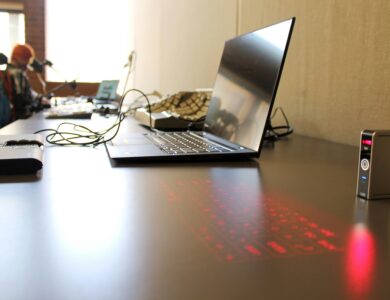
The digital age has ushered in a host of new technologies that are reshaping how we live, work, and learn. Among these, Virtual Reality (VR) stands out as a transformative force, particularly in the realms of education and training. This immersive technology offers experiences that go beyond traditional learning methods, providing new ways to understand and engage with information. In this article, we’ll explore how Virtual Reality is revolutionizing education and training under four key sub-headings: Immersive Learning Environments, Hands-On Skill Development, Remote Collaboration, and Accessibility and Inclusivity.
1. Immersive Learning Environments
Virtual Reality creates immersive learning environments that allow students to explore and interact with content in ways previously unimaginable. Unlike traditional methods that rely heavily on textbooks and lectures, VR enables learners to experience subjects firsthand. For example, history students can “visit” ancient civilizations and observe historical events as if they were present. Science classes can take a virtual tour of the human body, exploring complex biological systems up close. This kind of immersion helps to make abstract concepts more tangible and easier to understand.
Moreover, VR’s ability to simulate real-world environments provides students with a deeper emotional connection to the subject matter. This emotional engagement can enhance retention and understanding, making the learning experience more impactful. For instance, environmental science students can experience the effects of climate change in a virtual world, witnessing firsthand the melting glaciers or the deforestation of rainforests. These immersive experiences can evoke a strong emotional response, motivating students to engage more deeply with the subject.
2. Hands-On Skill Development
In fields that require hands-on skills, Virtual Reality offers an unparalleled opportunity for practical training. Medical students, for example, can practice surgeries in a virtual environment, honing their skills without the risk associated with real-life procedures. Similarly, engineering students can work on virtual machines, learning to assemble and disassemble complex systems without the cost and danger of physical components.
VR also plays a significant role in vocational training. Trainees in fields like welding, plumbing, and electrical work can practice their skills in a controlled virtual environment. This not only allows for repeated practice but also enables trainers to introduce a wide range of scenarios that may be rare or dangerous in real life. By providing a safe space for trial and error, VR helps trainees build confidence and competence.
The impact of Virtual Reality on skill development extends beyond technical skills. Soft skills, such as public speaking or teamwork, can also be developed through VR simulations. For example, individuals can practice giving presentations in a virtual auditorium or participate in virtual team-building exercises. These experiences can be particularly beneficial for those who experience anxiety in real-world situations, offering a safe space to build confidence and improve their skills.
3. Remote Collaboration
The rise of remote learning and remote work has highlighted the need for effective collaboration tools. Virtual Reality offers a unique solution by providing virtual spaces where people can meet, interact, and work together as if they were in the same room. In the context of education, VR classrooms allow students and teachers from different parts of the world to come together in a shared virtual space. This can enhance the learning experience by providing diverse perspectives and fostering a sense of community.
In training, VR enables collaborative problem-solving and teamwork. For instance, companies can use VR to train employees on complex processes by simulating a real-world environment where team members must work together to complete tasks. This can be particularly useful for industries like oil and gas, where on-site training can be dangerous and costly. VR allows for realistic simulations of hazardous situations, enabling teams to practice their response and coordination without risk.
Beyond structured training programs, Virtual Reality also facilitates informal learning and collaboration. Virtual meetups and workshops can bring together experts and enthusiasts from around the world, creating opportunities for networking and knowledge exchange. This can be particularly valuable in fields that are rapidly evolving, where staying up-to-date with the latest developments is crucial.
4. Accessibility and Inclusivity
One of the most significant benefits of Virtual Reality in education and training is its potential to improve accessibility and inclusivity. Traditional educational resources and training programs can be limited by geographical, financial, and physical barriers. VR can help overcome these challenges by providing accessible and affordable learning opportunities to a broader audience.
For students with physical disabilities, VR can offer customized learning experiences that accommodate their needs. For example, a student who cannot physically attend a field trip can still experience it through a virtual tour. Similarly, students with learning disabilities can benefit from tailored VR environments that provide alternative ways of understanding and engaging with the material.
VR can also democratize access to high-quality education and training. Elite institutions and organizations often offer the best resources, but not everyone has access to them. Virtual Reality can bring these resources to a global audience, allowing students and trainees from all backgrounds to benefit from top-tier instruction. This can be particularly impactful in developing countries, where access to quality education and training can be limited.
Conclusion
Virtual Reality is more than just a tool for entertainment; it is a powerful medium that is reshaping the landscape of education and training. Its ability to create immersive learning environments, facilitate hands-on skill development, enable remote collaboration, and enhance accessibility and inclusivity makes it a game-changer. As VR technology continues to evolve and become more accessible, its impact on education and training is likely to grow even further. By embracing Virtual Reality, educators and trainers can provide richer, more engaging, and more effective learning experiences, preparing students and professionals for the challenges of the modern world.




